Art Fairs
The First Tokyo Gendai Art Fair Is Off to a Promising Start. But There’s a Long Road Ahead for Japan to Compete on the Global Stage
The fair bucked low expectations in its debut.
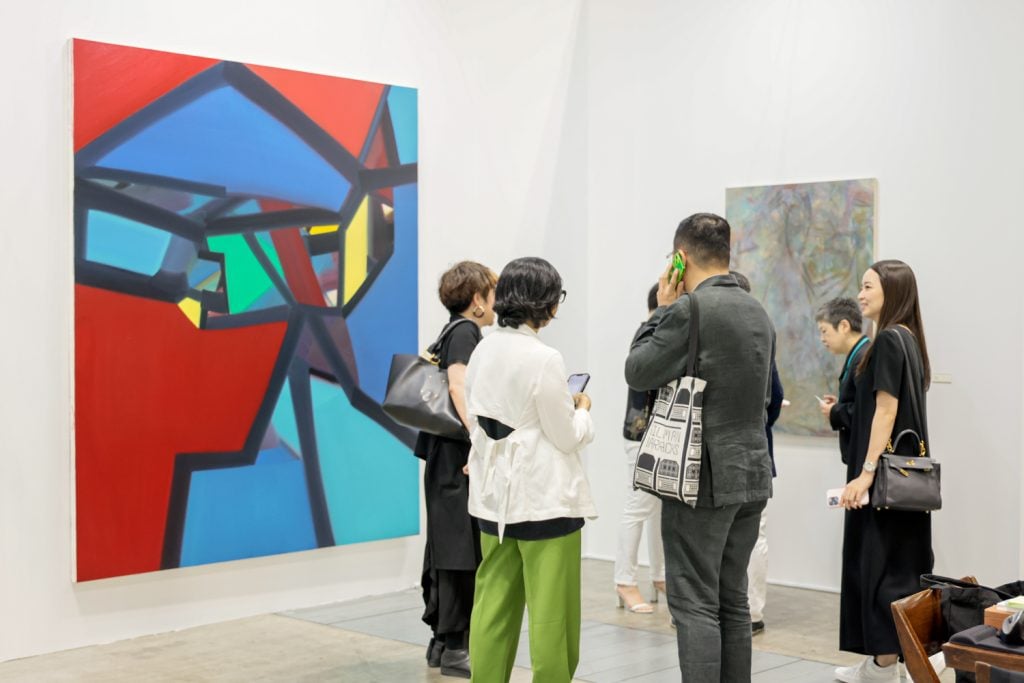
The fair bucked low expectations in its debut.

Naomi Rea

It is July in Yokohama, Japan, a port city situated to the south of Tokyo’s urban sprawl. Slowed down by the blistering heat, a cohort of besuited men filtered drowsily into the cavernous Pacifico convention center on Thursday. Alongside them, gaggles of well-heeled young people sporting the understated glam of designers like Bottega Veneta and Issey Miyake signaled that awaiting them inside was not a business conference, but a contemporary art fair making its sputtering debut.
Tokyo Gendai wants to solve the problem of Japan’s art market. Namely, that there isn’t one. Home to 125.7 million people, the country is the world’s third largest economy, and the combined wealth of the country’s richest 50 people is a staggering $192 billion. And yet, unlike comparables in the U.S. and China, it has yet to harness that immense buying power into a noteworthy share of the global art market, accounting for less than 4 percent of it.
So what’s the issue? Japan was once one of the biggest art-buying nations, snapping up trophy works at auction at warp speed, but it lost its mojo when its economic bubble burst in the early 1990s. Since then, Japanese buying activity has dried up, with collectors making mostly lower value purchases, only splurging on conservative blue chip Impressionist and modern artworks or traditional Japanese fine art and ceremonial objects.
Now, finally, a new generation of collectors is emerging in the contemporary art market. Collecting became trendy among a group of wealthy young entrepreneurs during lockdown. Bidding activity from Japan has risen at all three major international auction houses, and Japanese dealers reported a 28 percent increase in sales between 2019 and 2022, with homegrown buyers accounting for 81 percent by value. With no major international contemporary art fairs in the country, Tokyo Gendai is well positioned to respond to this growing appetite.
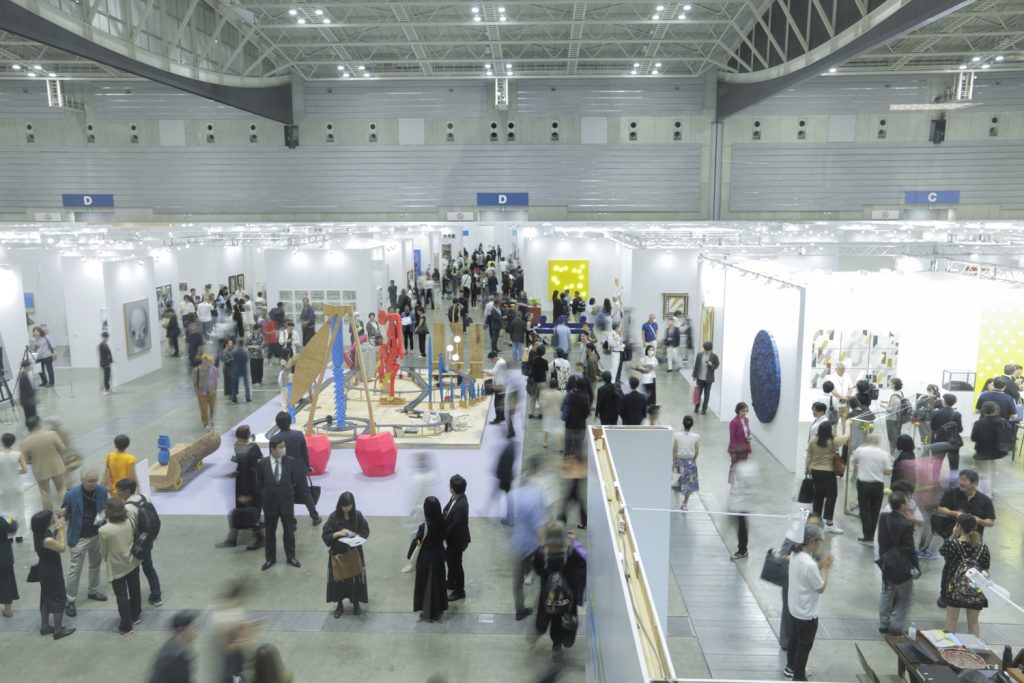
The scene at Tokyo Gendai 2023. Courtesy Tokyo Gendai.
Still, it is not facing an easy runway. Expectations were low in the run up to the fair’s debut. The yen is weak, and few people were enthusiastic about trekking out to Yokohama, about an hour’s drive from central Tokyo. The fair falls in the middle of summer when it is stiflingly hot in Japan, hardly an easy sell to international visitors. Arguably a better place in the calendar is held by Art Week Tokyo, which debuted last fall, or in the spring, when the cherry blossoms are beginning to open. Meanwhile, the existing landscape includes Art Fair Tokyo, a domestic art fair focused mainly on Japanese artists and the quality of which has not bred confidence in the Japanese scene.
The eleventh-hour withdrawal of six exhibitors including Pearl Lam Galleries and Cardi Gallery did not help confidence levels. The fair’s organizers attributed the abrupt bailouts to logistical issues, but there were also grumblings among the exhibitors about expensive overheads (the organizers declined to share a price per square meter) but a representative from one gallery confirmed that their booth had cost around $70,000.
Fears were allayed as what seemed like all of Tokyo’s art scene turned up on opening day. Roaming the aisles were the Mori Museum’s Mami Kataoka, arguably the most famous curator in Japan; respected thought leaders like curator Iida Shihoko and art historian Yujita Yuji; art stars including Hiroshi Sugimoto and Kōhei Nawa; and collecting heavyweights including Japanese billionaire entrepreneur Yusaku Maezawa. They were joined by plenty of clients from all over Asia including China, Taiwan, and Korea, although there were few faces from Europe or the U.S.
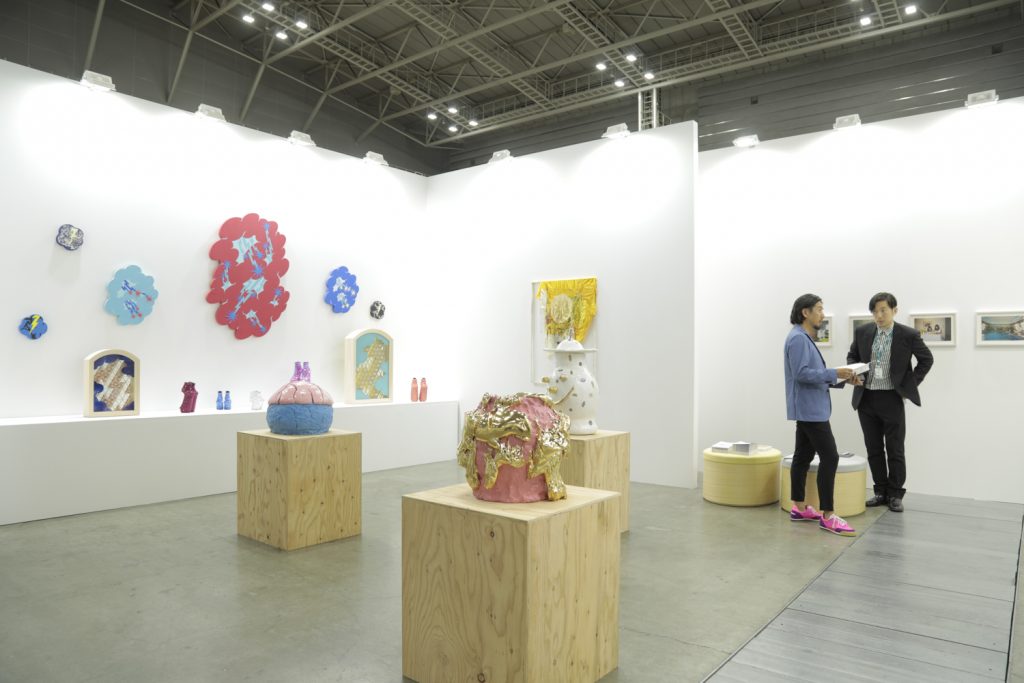
Kosaku Kanechika’s booth. Courtesy Tokyo Gendai.
Still, it was clear that the attendance was resulting in commerce, with sales audibly being confirmed in the booths. The galleries showing in the main section of the fair reported solid first day sales. “The first hour was crazy,” Kosaku Kanechika’s Moyu Honda said. For her, the fair was about “outreach to foreign clients” adding that they had met a mixture of new and existing clients. “At this fair we have people from overseas, which is huge. We don’t have that at Art Fair Tokyo.”
By mid-way through the first day, the majority of works on view by Noritaka Tatehana had sold; the artist’s trademark glittery “heel-less shoes,” inspired by the elevated wooden clogs worn by traditional Japanese courtesans (and Lady Gaga) were priced between $2,500 and $40,000 depending on size.
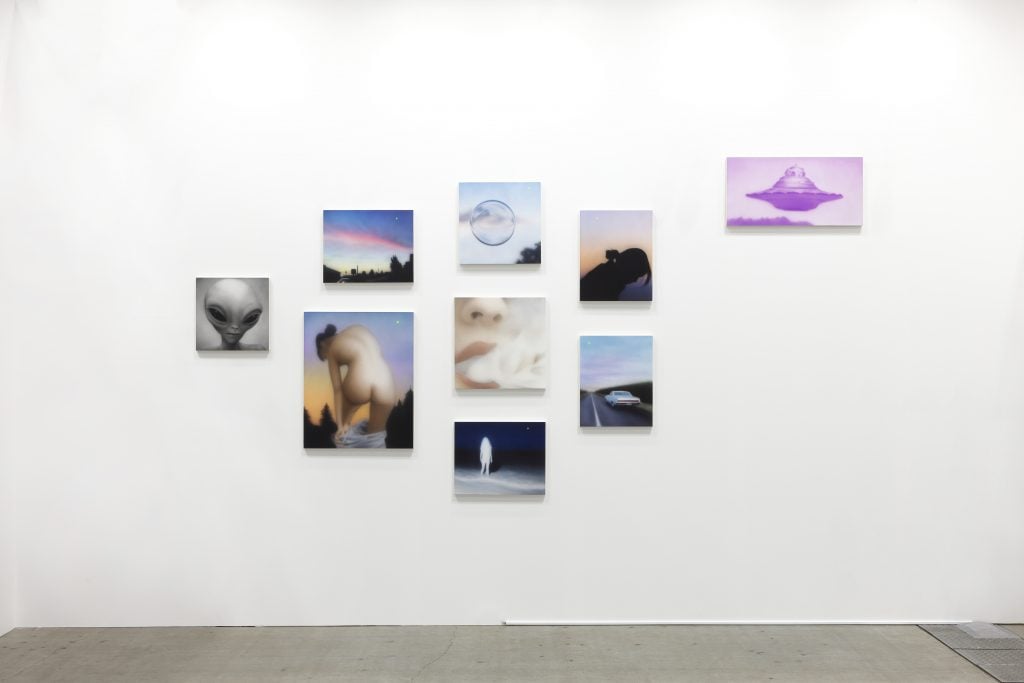
Works by Aryo Toh Djojo on view at Perrotin’s booth. Courtesy of the artist and Perrotin. Photo by Keizo Kioku.
Almine Rech sold works ranging from a Roby Dwi Antono work for between $19,000 and $22,000 to those by Tom Wesselmann priced between $425,000 and $460,000. Ceysson & Bénétière sold works by French artist Claude Viallat priced between $10,000 and $35,000.
Perrotin had largely sold out its booth of works by artists Mathilde Denize (priced up to €30,000) and airbrushed paintings by Aryo Toh Djojo (around $20,000) by the end of the first day, and Tang Contemporary Art took home a total of $390,000 across 13 artworks. While Sadie Coles HQ was pleasantly surprised to have sold multiple works at prices topping out at more than $200,000, director John O’Doherty said they had come for another reason: to see their long-term Japanese clients and engage with this emerging generation of collectors, given the importance of face-to-face meetings in Japan.
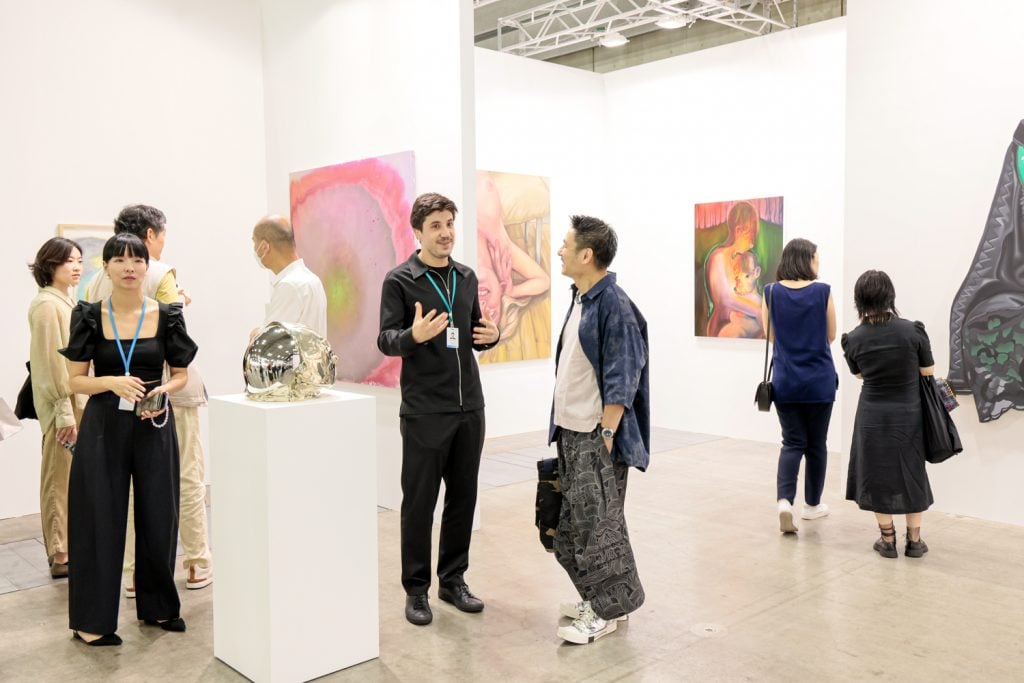
Almine Rech’s booth at Tokyo Gendai 2023. Courtesy Tokyo Gendai.
Blum and Poe presold their most significant works ahead of the fair, including a color pencil on paper work by Yoshitomo Nara for $110,000, but cofounder Tim Blum said he pointedly held things back so that he could sell on the booth. He sold a number of works on the spot, including ceramic works by Yuji Ueda and Kazunori Hamana and a painting by Kenjiro Okazaki, for an average price of around $30,000.
Galleries on the younger (and cheaper) end of the spectrum also sold well out of the gate. Athens-based Dio Horia sold works by Maja Djordjevic priced between $5,000 and $35,000. Carl Kostyál sold out its booth of works by Marria Pratts for prices ranging between €30,000 and €50,000. In the digital art section, the Hole sold a Vickie Vainionpää piece to a Japanese collector for $25,000.
Most sales reported were in the below $50,000 range, and none over $500,000, which is still small potatoes compared to some of the prices commanded at other contemporary fairs. “We don’t have the level or client here that’s going to readily spend even $200,000,” Blum said. “They are more comfortable under $100,000.”
So what needs to happen to take it further? “It’s not that the market is not there,” Taku Sato, director of edgy Tokyo gallery Parcel, said. “From a financial standpoint there is no advantage to collecting contemporary art. There are no deductions for donating that you find in other countries. It is complex to import and export, logistics-wise, so a lot has to do with infrastructure as well.” While a flashy installation by the up-and-coming artist group EVERYDAY HOLIDAY SQUAD hadn’t found a home by end of day one, Taku had sold a few paintings by New York-based Taro Chiezo for around $25,000 each.
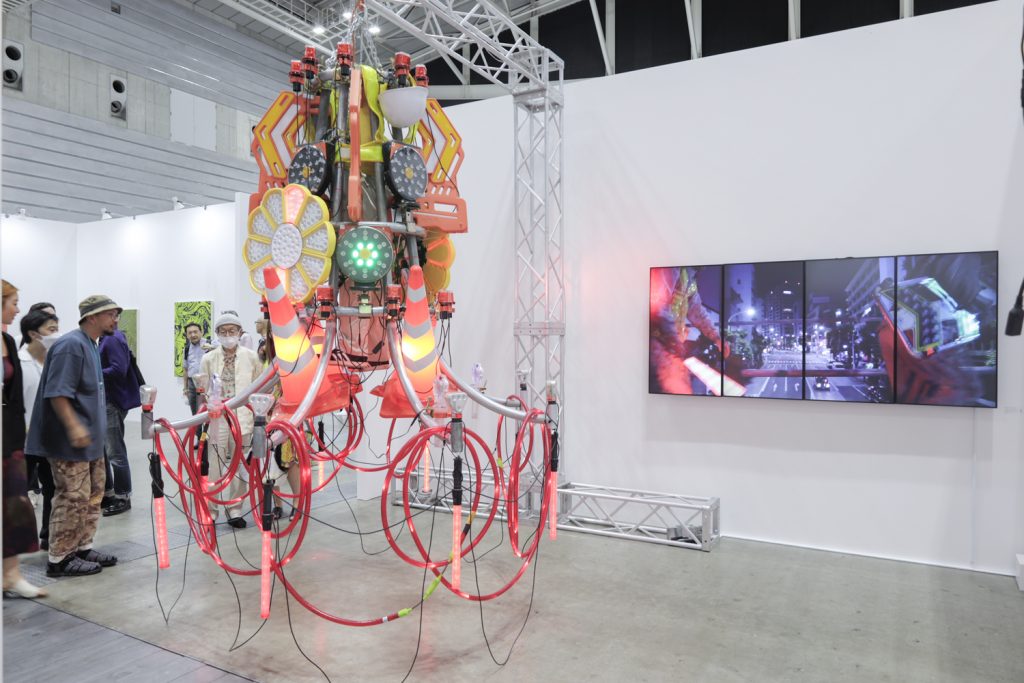
Parcel gallery’s booth at Tokyo Gendai 2023. Courtesy Tokyo Gendai.
A few recent policy changes have signaled that the Japanese government may finally be coming around to encouraging art sales from a policy standpoint. One month out of the fair, it granted Tokyo Gendai “bonded” status, meaning that foreign exhibitors were relieved from paying an up front 10 percent sales tax on any work imported into the country even before it is sold, a rule which had caused significant cash flow issue for galleries. Now the exhibitors can charge this to collectors at point of sale. The fair’s cofounder, Magnus Renfrew, of the Art Assembly, said he hopes that this will encourage international exhibitors in the future.
While Blum said the revision was a “huge step,” he thinks the government needs to go bigger and allow “bonded” warehouses and create incentives such as tax write-offs for gifting. “In Japan if they want to compete on the global stage with art they have to adapt,” he said.
Others identified a remaining hurdle for the development of the market at an educational level. “In 1996, the bubble burst and Japanese art schools said ‘no more ideas. Just make something pretty, accessible, sellable…’” collector Jeff Chiedo said. But that approach hasn’t formed a foundation for the market. “There’s real money in real art and there’s no money in decorative stuff,” he said.
And education needs to happen on the collector side of the table, too. A lack of exposure to international artists and museum shows has meant that buyers have tended to follow trends rather than developing their own eye.
For Takeo Obayashi—Japanese construction boss, art collector, and chairman of the Aichi Triennial—an international art fair is an opportunity to develop the tastes of this emerging generation of collectors. “There are many collectors in Japan but unfortunately they haven’t seen many of the great artists whose works are spotlighted in global museums. So sometimes those emerging Japanese collectors buy some things that are strange, by artists who are only recognized in Asia,” he said. “I want to introduce the great artworks by internationally recognized artists to those emerging collectors.”
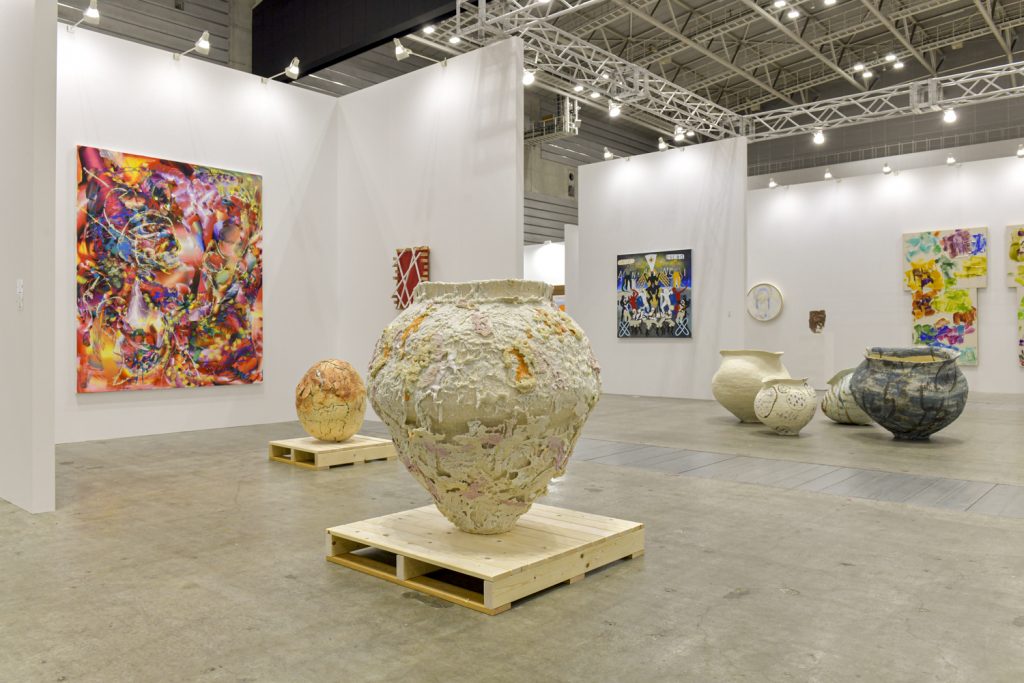
Blum and Poe’s booth at Tokyo Gendai 2023. Courtesy Tokyo Gendai.
Wahei Aoyama, founder of Tokyo gallery A Lighthouse called Kanata, sees the debut of Tokyo Gendai as a “step in the right direction,” but remarked that there are still limits to what the Japanese audience finds palatable in terms of contemporary art. “There is still a long way to go also in terms of what sort of works galleries can show. A lot of people see Tokyo Gendai as an improvement on Art Fair Tokyo but if you want to be an Art Basel you need to step it up,” he said.
Part of collector and former social worker Miwa Taguchi’s ambitions is her “art delivery project,” where she brings works from her collection to children in schools. Unusually for a collector, she was exhibiting at the fair, demonstrating a card game she had made to help children engage with art. “I think education is a very important foundation. It is very important to develop art literacy in Japan,” she said. “Children have pure eyes and are not influenced by extra information about which is expensive or popular. They just know what they like.”
All told, Tokyo Gendai generated a sense of optimism that the impediments to Japan’s growth on the global stage are already on their way out. The country’s finance minister was one of the suited men taking in the fair, and there was buzz not only about the emerging generation of collectors but also a new generation of artists who are taking more risks.
“I came here because I always follow the art, not the market, and I’ve seen the market here change exponentially in the last five years,” Blum said. “There’s more young collectors than ever before, they’re more studious, they’re more mannered, they’re more confident. So I hope that whatever is happening keeps happening.”
Tokyo Gendai is on view at Pacifico Yokohama through July 9.
More Trending Stories:
A Norwegian Dad Hiking With His Family Discovered a Rock Face Covered With Bronze Age Paintings
Lisa Schiff Questioned the Validity of Art Appraisals. Days Later, She Was Sued for Fraud